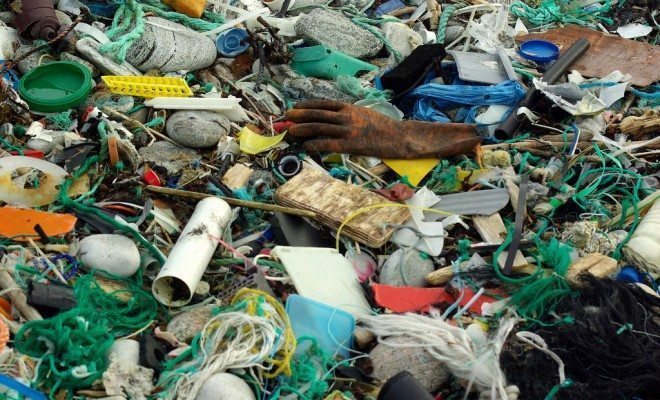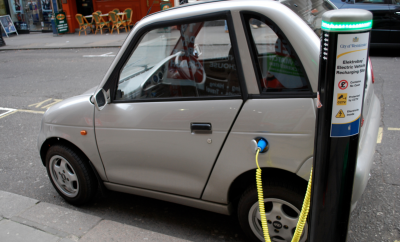 Image courtesy of [Bo Eide via Flickr]
Image courtesy of [Bo Eide via Flickr]
Energy and Environment
One Man’s Trash is Another Man’s Shoes: Adidas’s Plan to Tackle Ocean Trash
Life in plastic isn’t always fantastic. So why do we continue to cover our world in it? In the United States alone, we generate about 33 million tons of plastic waste per year. But in 2013, only nine percent of that total plastic waste was recovered for recycling. So where does the remaining 91 percent of plastic waste end up? While a significant portion of our trash is piled high in landfills, eight million tons of plastic trash ended up in the ocean from coastal countries in 2010. At this rate, the ocean trash tonnage is on track to increase tenfold in the next decade unless we take substantial steps to decrease our waste and improve the ways that garbage is collected and managed. One company is taking that challenge head on–Adidas has figured out one unique way to reduce, reuse, and recycle. Fairly soon, you may be able to look down at your feet to see the company’s new earth-friendly sneakers.
It makes sense to try to monetize our ocean pollution, particularly for the most industry-heavy countries. While China claims the top spot on the list of countries generating the greatest amounts of ocean-bound trash, the United States is 20th on the list. If the recyclable materials in the United States waste stream were recycled, we would generate over 7 billion dollars—that’s equivalent to Donald Trump’s purported net worth. More important than the monetary implications, non-recycled plastic waste in particular is responsible for the deaths of over a million seabirds and 100,000 marine mammals, including sea turtles, sea lions, and seals each year. The plastic that doesn’t end up in a sea turtle’s stomach pollutes our oceans, poisons our water, and stays there. The average time for a plastic bottle to degrade completely is at least 450 years but some take as long as 1000 years to biodegrade.
There is an obvious need to find ways to harmonize nature and the consumptive, wasteful system we now maintain. That’s one goal of the new partnership between Adidas and Parley for the Oceans, a New York-based ocean conservation organization. At the end of June, Adidas announced a prototype for a running shoe made completely of plastic trash, gillnet fishing, and deep sea trawling found in the ocean.
Today we showcased a shoe that six days ago was ocean plastic waste. Bring on tomorrow. pic.twitter.com/mjkxwOUih1
— adidas (@adidas) June 29, 2015
One of Parley’s goals is to “make environmental protection fiscally lucrative for pacesetting major companies,” and that’s exactly what this shoe will do. Adidas has plans to roll out more recycled, plastic-based products later this year, all in a larger effort to highlight ocean-based environmental issues and promote efforts to counteract marine pollution.
Collaboration and innovation creates progress. We present a concept shoe born from ocean plastic waste. pic.twitter.com/5gv4y5imNH
— adidas (@adidas) June 29, 2015
The Sea Shepherd Conservation Society, a non-profit, marine conservation organization that uses direct action tactics to protect marine life, was responsible for retrieving the materials that make up the outer design of the Adidas shoe. Sea Shepherd conservationists went on a 110-day expedition where they collected plastic from the ocean floor and even confiscated gillnets after they tracked down an illegal fishing boat off the west coast of Africa. The plastic that was collected went into the upper shoe structure and the green gillnets were knitted into the top of the sneaker to create its colorful design.
Adidas should be applauded for taking the lead in environmentally-aware sportswear. The company is the world’s third most valuable brand in the sports industry, just after Nike and ESPN, with a net worth of $6.8 billion dollars. This new sneaker and the upcoming line of shoes made from recycled plastics prove that even the big companies can go green, and do it in style. After all, trash looks much better when it’s being recycled on a shoe than it does when it’s polluting the ocean.








Comments